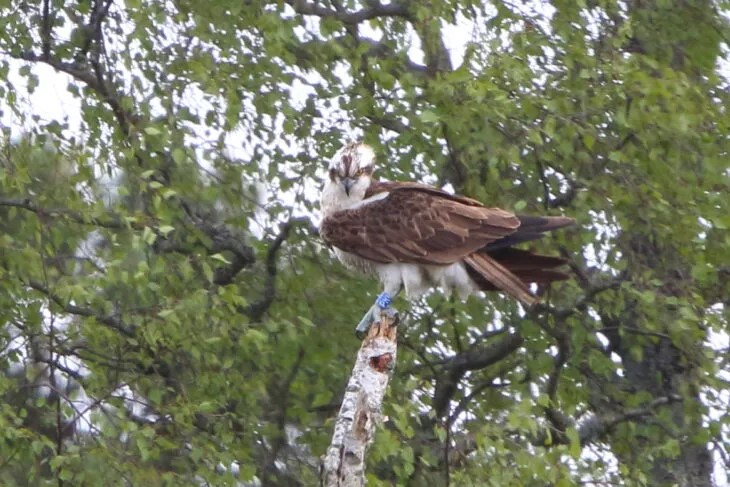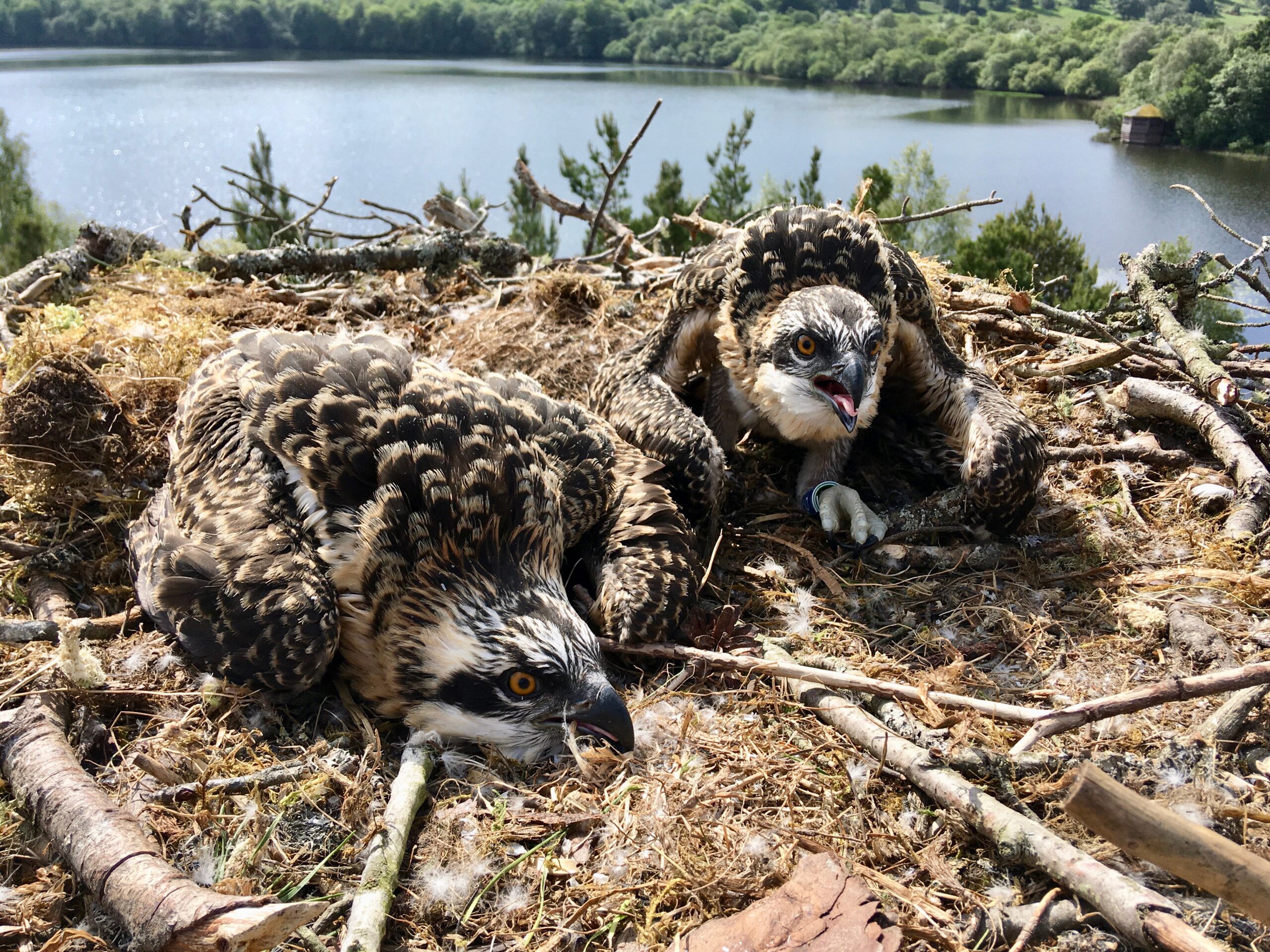Osprey Translocations: To move or not to move?
Ospreys are an iconic species which capture the imagination of those who watch them, inspire public engagement, and can even encourage investment in conservation activities. Ospreys were previously widespread across Europe but suffered severe population declines and became extinct in Britain in the late 1800s due to heavy persecution by humans and environmental pollution [1].
Currently in all of Europe there are between 9,600-13,600 breeding osprey pairs with approximately 300 of these breeding in the UK [2]. Fortunately, in 1954 a pair of ospreys from the Scandinavian population were discovered breeding at Loch Garten, marking the start of their natural recolinisation. Whilst these charismatic birds are returning from the brink of extinction, the survival rate of young to breeding age is relatively and as such as listed as an ‘Amber’ species, by the International Union for the Conservation of Nature, meaning their conservation is still of moderate concern.
There’s no doubt that the prioritisation of translocation projects in Europe since 1996 has assisted osprey population growth [3]. Translocation or “hacking” involves moving osprey chicks from their birthplace to an artificial site in another area before they fledge to allow them to “imprint” on the selected area.
Do ospreys come back to their birthplace?
Male ospreys tend to return within 27km of the area they fledged. A great example of males returning close to the area they fledged from was the return of the male PH1 in 2019. PH1 hatched at Loch of the Lowes in 2017 to parents LM12 (the current male) and LF15 (a past female) and attempted to intrude his natal nest! On the other hand, females are known to disperse in search of unoccupied territories or mates for an average of 384km [4].

As ospreys map out and imprint on the area where they first fly, their translocation involves moving chicks just before they fledge at approximately six weeks old [5]. This ensures that once they are of breeding age, they will return to the translocation area rather than their birthplace.

Figure 2 Five-week-old Osprey Chicks LR1 and LR2 after being ringed ©Keith Brockie
Do translocation projects help expand raptor populations?
Translocation projects have helped multiple European raptor populations, including white tailed eagles [6], red kites [7], and ospreys. Rutland Water is a great example of a successful UK-based translocation project, where sixty-four osprey chicks were translocated between 1996 and 2001 from Northern Scotland. The population has since become well-established [5]. Surprisingly, two of the male birds in the project were spotted in Wales two years after translocation, returning to breed. This project has shown the important role translocation can play in re-establishing osprey populations in places they were historically found.
Future translocation projects and their importance
As Ospreys are reluctant to move far away from the place they fledged, similarly to other recovering raptor species, their natural re-colonisation would be hindered without human intervention [8]. An example of an upcoming hacking project is taking place in Ireland where ospreys have been extinct since the early 19th century [9]. Between fifty and seventy osprey chicks from Norway are set to be released in Ireland over the next five years [10]. These projects will hopefully give a helping hand to the re-establishment of these iconic birds across the UK and Ireland.
Many young ospreys are currently searching for a territory of their own therefore now is the perfect time to keep an eye out for any ‘Darvic‘ coloured ringed birds. It’s worth noting that each ring has a unique two- or three-character code. Scottish ospreys are ringed on their left leg, whereas English and Welsh birds are ringed on the right leg. Sightings can be reported to the Roy Dennis Foundation to help develop an understanding of the dispersal, population growth, and geographical range of the expanding osprey population.
Remember to keep up to date with the ospreys at Loch of the Lowes by watching the webcam here, following us on Twitter or Facebook for regular updates.
Ciara Duggan
Species Protection Officer
The Trust’s Osprey Protection Programme at Loch of the Lowes is supported by players of People’s Postcode Lottery.
References:
- Saurola, P., The Osprey (Pandion haliaetus) and modern forestry: a review of population trends and their causes in Europe. Journal of Raptor Research, 1997. 31(2): p. 129-137.
- International, B. Species factsheet: Pandion haliaetus. 2023; Available from: http://www.birdlife.org.
- Monti, F., et al., Evolutionary risks of osprey translocations. Science, 2022. 376(6592): p. 468-469.
- Englund, J.V., An urban Osprey population established by translocation. Journal of Raptor Research, 2002. 36: p. 91-96.
- Mackrill, T., RSPB Spotlight Ospreys. 2019: Bloomsbury Publishing.
- Mee, A., et al., Reintroduction of white-tailed eagles Haliaeetus albicilla to Ireland. Irish Birds, 2016. 10(3): p. 301-314.
- Evans, I.M., et al., The re-establishment of Red Kite breeding populations in Scotland and England. British Birds, 1997. 90(4): p. 123-138.
- Schmidt-Rothmund, D., R. Dennis, and P. Saurola, The Osprey in the Western Palearctic: Breeding population size and trends in the early 21st century. Journal of Raptor Research, 2014. 48(4): p. 375-386.
- Dennis, R., A Life of Ospreys. 2008.
- Eireann, R.T. Plans to reintroduce up to 70 Ospreys over five years. 2023 12/04/2023]; Available from: https://www.rte.ie/news/regional/2023/0403/1367997-osprey-reintroduction/#:~:text=Plans%20to%20reintroduce%20Ospreys%20into,Ireland%20around%20the%2017th%20century.
Help protect Scotland’s wildlife
Our work to save Scotland’s wildlife is made possible thanks to the generosity of our members and supporters.
Join today from just £4 a month to help protect the species you love.
Preface
Ospreys are an iconic species which capture the imagination of those who watch them, inspire public engagement, and can even encourage investment in conservation activities. Ospreys were previously widespread across …
